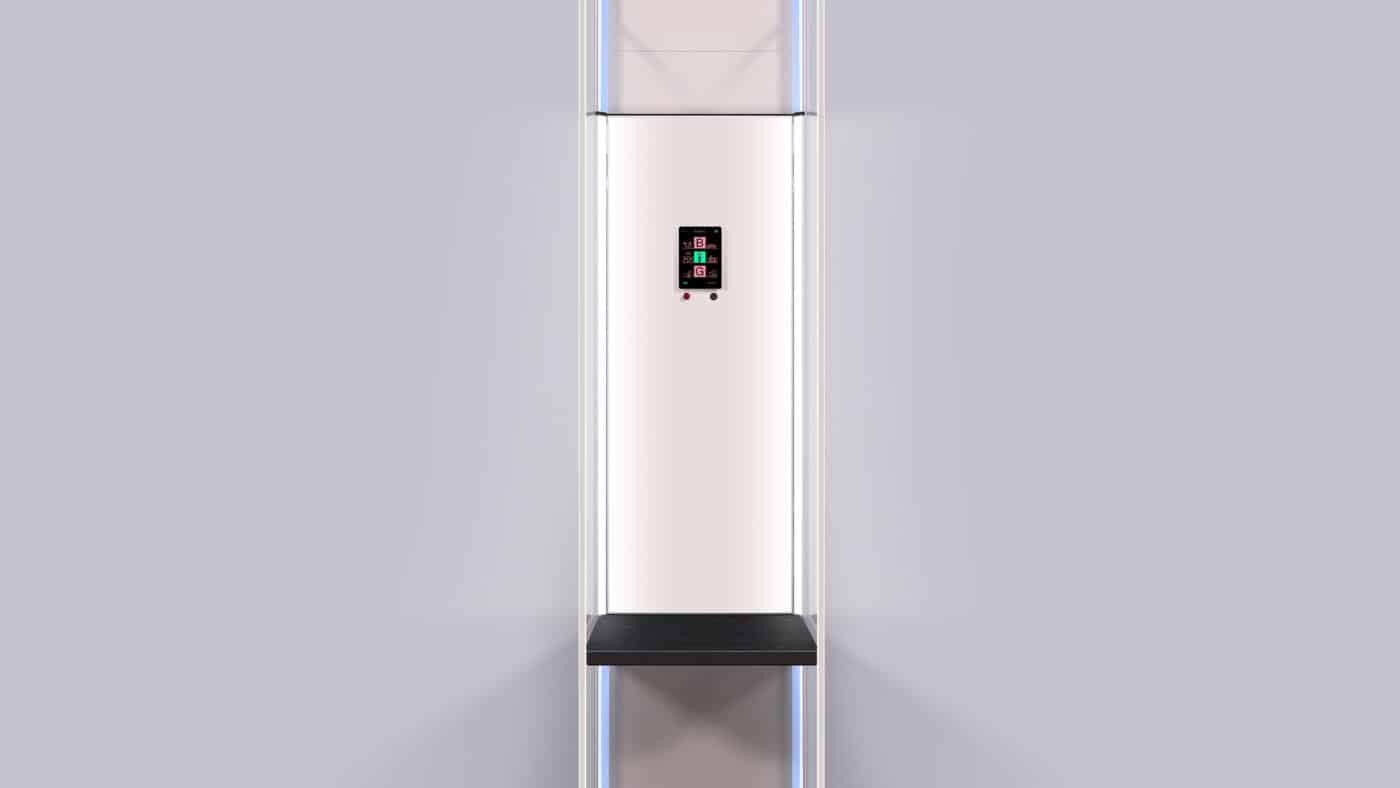
The decision to install an elevator in your home is a controversial topic among architects and homeowners alike. While some view it as an unnecessary luxury, others recognize its potential to improve the quality of life for residents and visitors.
This article will discuss the key benefits of having a home elevator, the different types available, the associated costs, and other key factors that may help guide your decision-making process.
What are home elevators?
Home elevators use electrical power to move the elevator car, allowing people or freight to be transported between floors in a building. These elevators come in two main forms: larger ones for multi-story homes and compact versions designed to save space in smaller homes. These elevators are powered by an electric motor that drives a pulley system that raises the elevator car using ropes or chains. Electrical control systems ensure smooth and safe elevator movement.
History of electric elevators
The journey of electric elevators began in the 18th century, when English engineer Isaac Wright created the first electric elevator in 1880. However, they did not become widely used until the early 20th century when electric motors became more powerful and efficient, making them a practical solution for vertical transportation in buildings.
Types of electric elevators
There are many types of elevators, depending on how they operate. Electric elevators include various types, such as villa elevators or glass elevators, and each type has different mechanisms, sizes, and capacities. Here are the most common options:
Hydraulic home elevators
These elevators operate using hydraulic pressure, which can be generated from oil or air. They are reliable and provide a smooth ride, but they require more space and maintenance than other options.
Screw and Nut Elevators
This type uses a rotating screw mechanism to move the elevator car. Screw elevators are ideal for homes with limited space and are known for their energy efficiency and low maintenance requirements.
Pneumatic Vacuum Elevators
These elevators use air pressure to move the cabin up and down using vacuum suction. They require no machine room, making them a great space-saving solution. Additionally, they offer a smooth, quiet ride and a modern appearance.
Belt and rope elevators
These elevators are known for their quiet and efficient operation using pulleys and ropes. They require no machine room, are energy-efficient, and are easy to maintain, making them a practical and versatile option for many homes.
Components of an electric elevator
Electric elevators consist of several components that work together to ensure smooth and safe operation. Here are the main parts:
- Hoist: This component raises and lowers the elevator based on commands from the control panel. Its size and speed depend on the elevator type and the height of the building.
- Cabin: The part that carries passengers or cargo. Its size and design vary depending on its use, such as in food elevators or hospitals.
- Elevator doors: These are located on each floor and only open when the elevator is in the correct position. Some models have interior doors for added security.
- Control panel: It is the “brain” that processes button commands to control the elevator’s movement.
- Speed regulator: Ensures the elevator operates at a safe speed and activates automatic brakes when necessary.
- Bottom supports: Safety devices at the bottom of the well designed to protect passengers in the event of a fall.
- Ropes: Heavy metal cables that connect the cab to the hoist, allowing movement.
- Counterweight: A weight that moves opposite the direction of the cabin, helping to balance the elevator during ascent and descent.
How do elevators work?
Elevators are designed to move people or freight between floors in buildings, relying on a coordinated system of components to ensure smooth and safe operation. Here’s how they work:
- Elevator Request: The process begins when a button is pressed inside the cabin or on a specific floor, sending a signal to the control system.
- Control system: The system determines the elevator’s location and where it needs to go, then sends a signal to the motor to start moving.
- Motor operation: The motor operates to raise or lower the cabin by moving a pulley and the metal ropes attached to it.
- Speed control: Sensors monitor and adjust the elevator speed to ensure a smooth stop at the specified floor.
- Opening the doors: When you reach the desired floor, the elevator doors open to allow passengers to enter or exit.
- Doors Close: After passengers have entered or exited, the doors close and the elevator is ready for the next trip.
These steps work together to ensure that your elevator operates efficiently and safely.
Home Elevators: Uses and Benefits for Homeowners
Home elevators offer a wide range of practical benefits for homeowners. Here are some of the key features:
- Providing accessibility for the elderly and people with special needs.
- Security and protection features.
- Increase the value of the property.
- Comfort and ease.
- Space saving solution.
Elevator installation process
Before deciding to install an elevator, it’s important to understand the installation process. Here’s an overview of the basic steps:
- Site inspection.
- Design and planning.
- Start installation.
- Engine and machine assembly.
- Cabin assembly.
- Counterweight and rope installation.
- Speed regulator installation.
- Test.
The best elevator company in Saudi Arabia
When choosing an elevator company in Saudi Arabia, it is important to consider several key factors:
- Quality.
- the price.
- Experience.
- Warranty.
- After-sales service.
SWIFT Lifts is an ideal choice, offering high-quality elevators with excellent performance and excellent installation and maintenance services.
الأسئلة الشائعة
تتراوح الأسعار عادة بين 50,000 ريال سعودي و200,000 ريال سعودي، وذلك حسب النوع والحجم والمواصفات.
يستغرق التركيب عادة أسبوعًا واحدًا للمصاعد التي تعمل بنظام البرغي والصامولة، ومن 3 إلى 6 أسابيع لأنواع الحبل أو السير.
نعم، المصاعد الكهربائية موفرة للطاقة وتتميز بتكاليف تشغيل منخفضة، خاصة مع استخدام تقنيات حديثة مثل أنظمة استعادة الطاقة.
يُفضل البحث عن زر توقف الطوارئ، وحماية من الحمل الزائد، وحساسات الأبواب، ونظام فرامل أوتوماتيكي، ومصدر طاقة احتياطي.
نعم، يمكن تصميم المصاعد الكهربائية المنزلية لتناسب مساحات مختلفة وأحجام متنوعة وتفضيلات تصميم مختلفة حسب احتياج المنزل.










